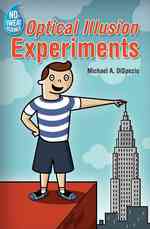- ホーム
- > 洋書
- > 英文書
- > Literary Criticism
Full Description
Children's literature has been taught in undergraduate classrooms since the mid-1960s and has grown to become a staple of English literature, library science, and education programs. Children's literature classes are typically among the most popular course offerings at any institution. It is easy to understand why; children's literature classes promise students the opportunity to revisit familiar works with fresh eyes. With the growth of the children's publishing industry and the celebration of recent scholarly interventions in the field, the popularity of the discipline is unlikely to abate. A central question of current children's literature scholarship and practice is how to effectively address contemporary questions of social justice. This collection offers a series of interventions for the practice of teaching equity through children's literature in undergraduate classrooms. It is intended for individuals who teach, or who are interested in teaching, children's literature to undergraduates. It includes contributions from practitioners from a range of institutional affiliations, disciplinary backgrounds, nationalities, and career stages. Furthermore, this volume includes contributions from scholars who belong to groups which are often underrepresented within academia, due to race, nationality, ethnicity, gender identity, disability, or other protected characteristics.
Contents
Editors' Introduction: Children's Literature beyond the Golden Age?
Gayatri Devi, Philip Smith, and Stephanie J. Weaver
Part I Theoretical Approaches to Teaching Children's Literature
Chapter 1 The Pedagogical Potential of Children's and Young Adult Literature: Why All English Studies Professors Should Teach Children's and Young Adult Texts
Erika Romero
Chapter 2 Censoring the "N-Word": Issues When Teaching Early African American Children's Folktales
Lashon Daley
Chapter 3 Engaged Pedagogy as Empowerment: Teaching Embodiment of Gender and Sexuality in the Adolescent Literature Classroom
Tharini Viswanath
Chapter 4 The Power of Diverse Perspectives and Inclusive Voices in Contemporary Young Adult Literature
Elizabeth Laura Yomantas
Part II Pedagogical Approaches to Teaching Children's Literature
Chapter 5 And Now for a Story: The Critical and Emotional Benefits of Reading Aloud When Teaching Children's Literature
B.J. (Epstein) Woodstein
Chapter 6 Teaching LGBTQ+ Picture Books in First-Year Writing
Noah Mullens
Chapter 7 Reading Decolonially in a Children's Literature Classroom in the Philippines
Gabriela Lee
Chapter 8 Teaching Guide: Children's Literature Resource File for Teaching Children's Literature to Undergraduates
Laura Lemanski, Sara K. Sterner, and Megan Van Deventer








